St. Dunstan's Window
St. Dunstan’s Window
The window commemorates the life of Thomas More, Lord Chancellor of England (1529-32). More was beheaded in the time of Henry VIII and his head lies within the Roper Chapel vault in St. Dunstan's Church. The window was the gift of friends from the St. Thomas More Church in Kansas City, Mo., U.S.A., and of friends from the St. Thomas More Church in Vienna, Austria and of the Reverend Hugh O. Albin, Vicar of the Parish. It was designed and made by Lawrence Lee. Photograph by Tommy Heyne.
Click on a figure to learn more about this window.
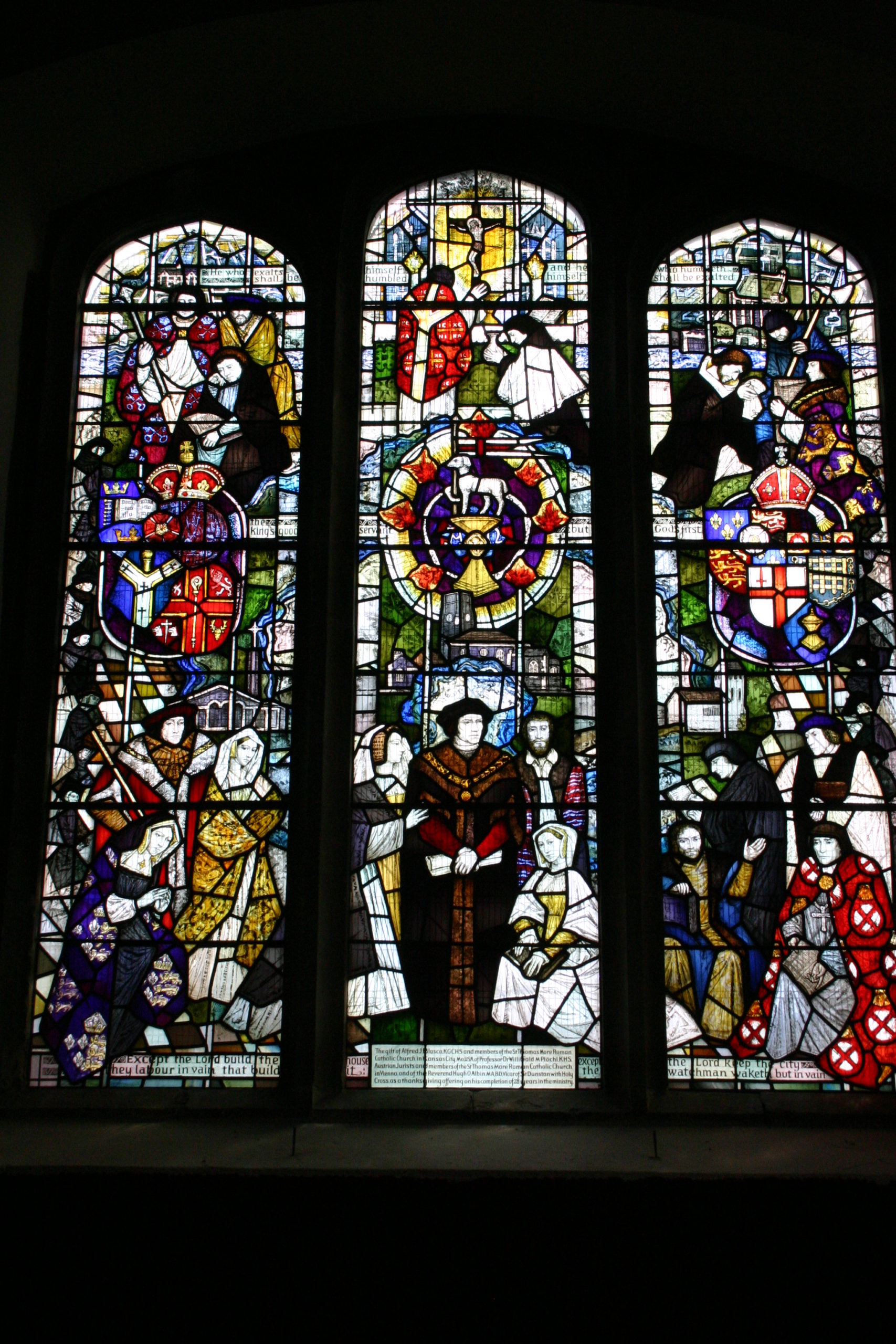
Sir Thomas More, Chancellor of England
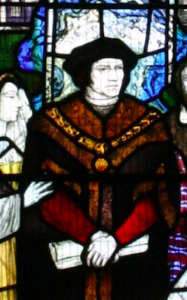
Sir Thomas More, Chancellor of England
Alice, his wife
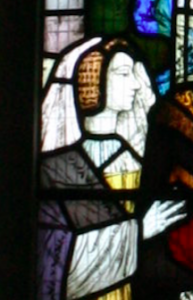
Alice, his wife
Margaret More, his daughter
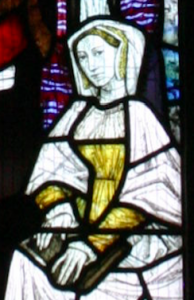
Margaret More, his daughter
William Roper, son-in-law
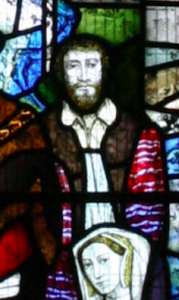
William Roper, son-in-law
Cecily, More's daughter
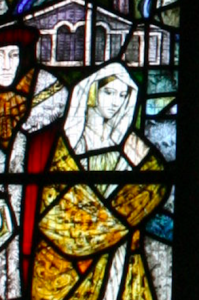
Cecily, More's daughter
Grocyn, More's tutor
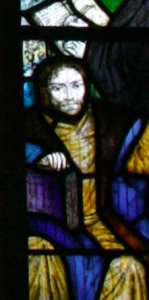
Grocyn, More's tutor
Erasmus, his friend
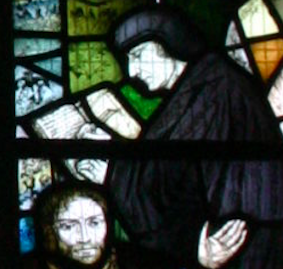
Erasmus, his friend
John Colet, Dean of St. Paul's & friend
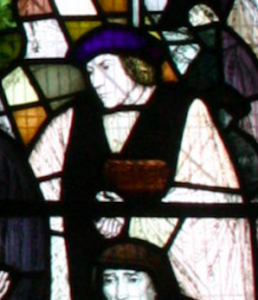
John Colet, Dean of St. Paul's & friend
St. John Fisher, Bishop of Rochester
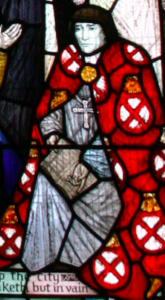
The text in the open book Fisher holds is from the Utopia. Fisher points to this text with his left hand: "That not only the king's honor but also his safety rests more upon his people's wealth than upon his own...." The other page has this text: "the people choose a king for their own sake and not for his--soby his care and labour they might live happily and secure from danger...that if a king should fall into such confirmed hatred of his people that he cannot secure their loyalty without resort to threats, exactions, and confiscations and his people's impoverishment, he had better abdicate his throne rather than attempt by these means to retain the name without the glory...what if I were to advise him to put aside pride...."
Queen Catherine, wife of Henry VIII
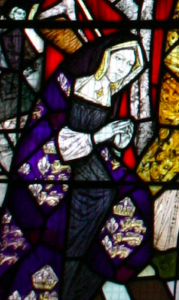
Queen Catherine, wife of Henry VIII
Thomas More, the Scholar
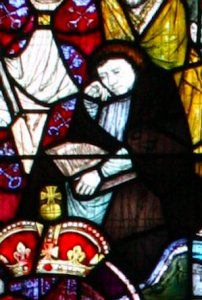
Thomas More, the Scholar
Thomas More, the Churchman
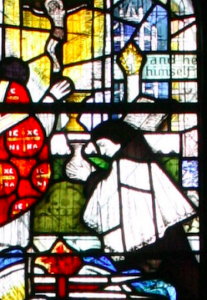
Thomas More, the Churchman
Thomas More, the Martyr
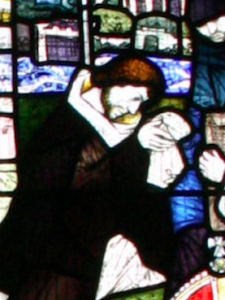
Thomas More, the Martyr
Cromwell, subsequent Chancellor
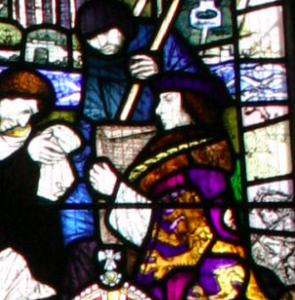
Cromwell, subsequent Chancellor
Wolsey, Cardinal and Archbishop of York
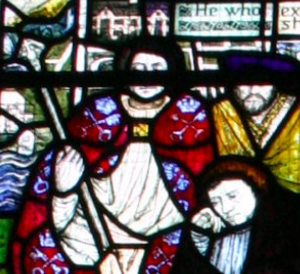
Wolsey, Cardinal and Archbishop of York
Armorial Group

- Oxford University
- The Great Seal of Henry VIII
- Diocesan arms of Canterbury
- The Borough of Chelsea
The Agnus Dei and Gifts of the Holy Spirit

The Agnus Dei and Gifts of the Holy Spirit
Armorial Group
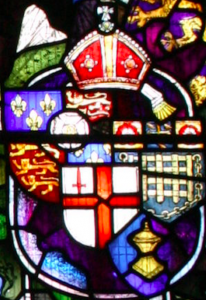
- Tudor Arms of England
- The City of Westminster
- The City of London
- Symbol of St. Dunstan
St. Thomas More Church, Kansas City
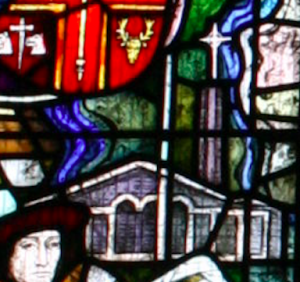
St. Thomas More Church, Kansas City
Chelsea Old Church
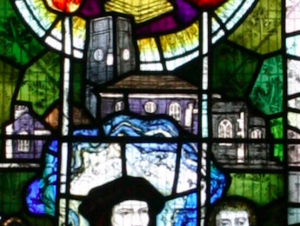
Chelsea Old Church
St. Thomas More Church, Vienna, Austria
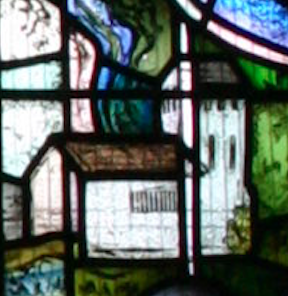
St. Thomas More Church, Vienna, Austria
More's house at Chelsea
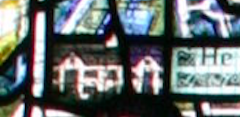
More's house at Chelsea
The Tower of London
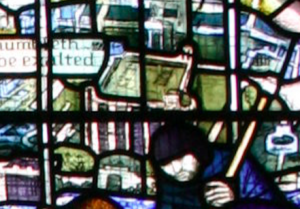
The Tower of London
Inscription
"He who humbleth himself shall be exalted and he who exalteth himself shall be humbled."
Inscription
I die "the King's good servant, but God's first."
The Duke of Norfolk
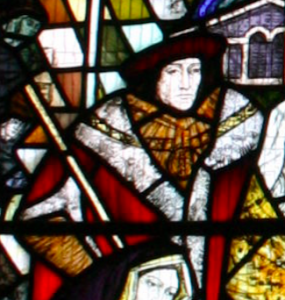
The Duke of Norfolk
Inscription
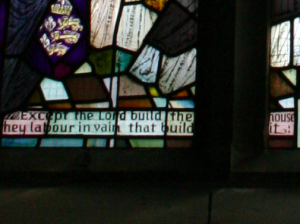
"Except the Lord build the house, except the Lord keep the city, they labour in vain that build it, the watchman waketh but in vain."
Inscription
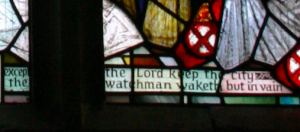
"Except the Lord build the house, except the Lord keep the city, they labour in vain that build it, the watchman waketh but in vain."
Inscription
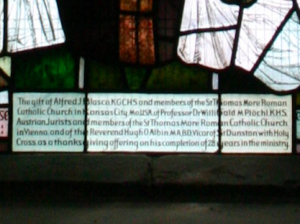
The gift of Alfred J. Blasca K.G.C.H.S and members of the S. Thomas More Roman Catholic Church in Kansas City, MO., U.S.A. of Professor Willibald M. Ploechl, K.H.S., Austrian Jurists and members of the St. Thomas More Roman Catholic Church in Vienna and of the Reverend Hugh O. Albin in M.A.B.D., Vicar of St. Dunstan with Holy Cross as a thanksgiving offering on his completion of 28 years of ministry.
Location: St. Dunstan's Church, St. Dunstan Street, Canterbury, Kent, GB.
Artist: Lawrence Lee, glazier.
Date: 1973
Description: This stained glass window has three main panels. The left-hand one shows Thomas More in the center of the Civle power. In the center of the panel, there are heraldic shields representing Canterbury, Oxford, Westminster and other places, together with the great shield of Henry VIII. At the bottom, More appears in a red gown, flanked by two of his daughters.
The center panel depicts More as the family man among by his wife, Alice, William Roper and his daughter Margaret. In the center of this panel are shown the Lamb of God and the seven gifts of the Holy Spirit as tongues of fire, while at the top, More is shown serving Mass.
The right-hand panel shows More the scholar with Dean Colet, Bishop Fisher, and Erasmus. At the top is a view of the Tower of London and More preparing for his execution. Cromwell is with him.
There is no variation in age between the first panel, showing More the statesman and the third depicting More being executed. More is represented with a ceremonial garment on the execution scene in the third panel, which is not what happened in reality.
The window is rich in colors. It is to be noted that each time More appears, his clothes are different. There are three captions illustrating More's life. The first at the top which runs as follows: "He who exalts himself shall be humbled and he who humbleth himself shall be exaulted" comes from Luke 14:1. The second caption in the middle is More's famous words on the scaffold: I die "the king's good servant, but God's first." At the bottom is repeated twice (once on the left and again on the right) Psalm 76:1: "Except the Lord build the house, except the Lord keep the city, they labour in vain that build it, the watchman waketh but in vain." The lower rectangle in the center panel names the givers.
The text in the open book Fisher holds is from the Utopia. Fisher points to this text with his left hand: "That not only the king's honor but also his safety rests more upon his people's wealth than upon his own." The other page has this text: the people "choose a king for their own sake and not for his – so by his care and labour they might live happily and secure from danger ... that if a king should fall into such confirmed hatred of his people that he cannot secure their loyalty without resort to threats, exactions, and confiscations, and his people's impoverishment, he had better abdicate his throne rather than attempt by these means to retain the name without the glory ... [W]hat if I were to advise him to put aside pride...?"
The window, dedicated on 14 June 1973, was donated by A. Blasco, K.G.C.H.S. and members of the St. Thomas More Church in Kansas City, Missouri; by Professor W. Ploechl, K H. S.; and other jurists and members of the St. Thomas More Church in Vienna, Austria; and by the vicar of Chelsea Old Church, Rev. Hugh O. Albin.
It overlooks the altar in the St. Nicholas (or Roper) Chapel – just above the vault where the head of St. Thomas More rests. It was made by Lawrence Lee, one of the foremost English glaziers, who helped with the Coventry Cathedral windows.
See also:
- ALBIN, Hugh O., "Canterbury: More's Head and a More Window," Moreana, No. 37, (February 1973), pp. 51-52.
- RAMSEY, M. S. et al., "The Thomas More Window at Canterbury," Moreana, No. 39, (September 1973), pp. 115-118.